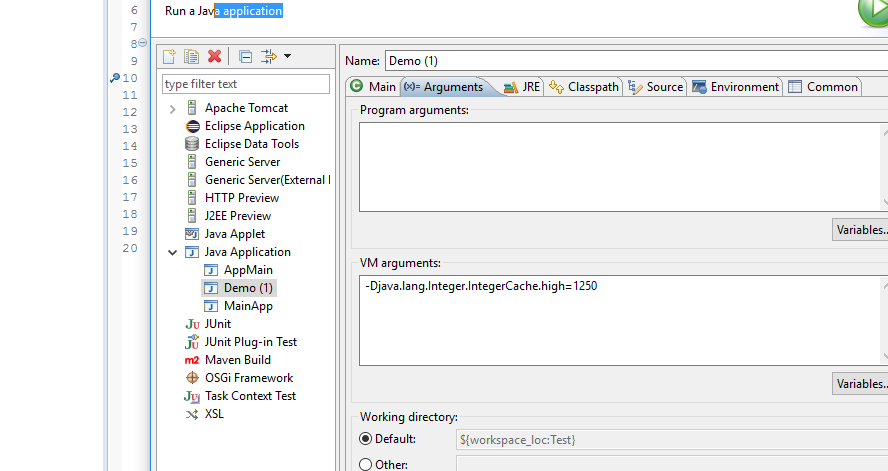wrapper class (Integer 为例)
1,导入 Integer a = 100; Integer b = 100; Integer c = 150; Integer d = 150; a == b; true c == d; false
2,wrapper class(包装类) java是面向对象的语言,在java中,为了方便编程,设定了8中基本数据类型,分别是: byte,short,int,long,float,double,char,boolean 为了编程对象化操作,在java5之后,引入了包装类型,8中基本数据类型可以通过包箱,拆箱 机制和其对应的包装类进行相互的转换,基本数据类型对应的包装类分别是: Byte,Short,Integer,Long,Float,Double,Character,Boolean
3,a == b , c == d,两个对象的比较,实际是内存地址的比较。
Integer a = 100,等同于Integer a = Integer.valueOf(100);
public static Integer valueOf(int i) { if (i >= IntegerCache.low && i <= IntegerCache.high) return IntegerCache.cache[i + (-IntegerCache.low)]; return new Integer(i); }
当满足条件 i >= IntegerCache.low && i <= IntegerCache.high 的时候,返回缓存里的 对象,当不满条件的时候,才会创建一个新的new Integer() 对象.
4,解析,从缓存中取对象,还是创建新的对象的条件
private static class IntegerCache {
static final int low = -128;
static final int high;
static final Integer cache[];
static {
// high value may be configured by property
int h = 127;
String integerCacheHighPropValue = sun.misc.VM.getSavedProperty("java.lang.Integer.IntegerCache.high");
if (integerCacheHighPropValue != null) {
try {
int i = parseInt(integerCacheHighPropValue);
i = Math.max(i, 127);
// Maximum array size is Integer.MAX_VALUE
h = Math.min(i, Integer.MAX_VALUE - (-low) -1);
} catch( NumberFormatException nfe) {
// If the property cannot be parsed into an int, ignore it.
}
}
high = h;
cache = new Integer[(high - low) + 1];
int j = low;
for(int k = 0; k < cache.length; k++)
cache[k] = new Integer(j++);
// range [-128, 127] must be interned (JLS7 5.1.7)
assert IntegerCache.high >= 127; }
private IntegerCache() {}
}
IntegerCache 是Interger 的静态内部类。 IntegerCache.low : -128 IntegerCache.high : JRE可设置,不设置时候默认是127,通过属性java.lang.IntegerCache.high 来配置,从以上的代码可以看出,初始化的时候,会将统一创建值为-128 到 127 的对象放入 到Integer cache[] 中,所以赋值的时候,值若在cache的区间内,会之间从Integer.cache 中取出对象,而不用再次创建。
5,包装类的low,high 值 Byte : -128 ~ 127 Short:-128 ~ 127 Integer:-128 ~ 127 Long:-128 ~ 127 Character :0 ~ 127
6,设置包装类Integer.cache的high 值 一般来说,尽可能创建对象的时候,尽可能调用valueOf(),而不是 Integer i = new Integer(); 因为这样可以避免创建新的对象,减少内存开销,提高性能。 若想将缓存的容量扩大,(Integer:-128~127,length == 256),可通过修改VM args 来修改。
具体方法如下 (Eclipse为例)
点击Run,Run Configurations,找到Java Application,找到对应的Class,点击Arguments, 在VM Arguments 栏输入,-Djava.lang.Integer.IntegerCacheHigh = 1250,这样就将high 的值设为了1250了,也就扩大了缓存的容量。





